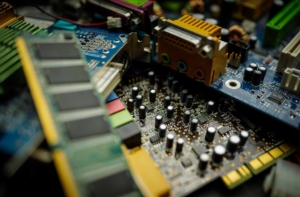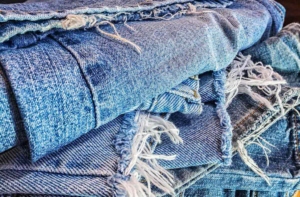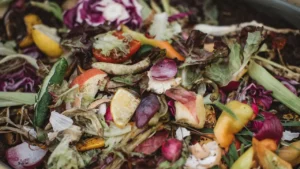The Peanut Butter Project
The Peanut Butter Project
Food waste is a massive problem in America, and we’re not just talking about the billions of dollars of food thrown away yearly.
Tons of food rot in landfills daily, consuming valuable space and producing harmful emissions. When companies are forced to recall products, that creates even MORE waste, as they have to produce more products to replace the tossed ones.
Luckily, there are ways to dispose of contaminated food waste sustainably. When one peanut butter company was forced to recall over 65 tons of product, they knew they needed a sustainable disposal solution – and that CheckSammy was the right partner for the job. Instead of just throwing out all that peanut butter, they were able to use CheckSammy’s services for a much more sustainable result. Here’s how:
The Problem
When a food company recalled a massive amount of peanut butter, they didn’t want to send all that food to the landfill. They needed to find an alternative, cost-effective way to dispose of their recalled peanut butter.
When peanut butter is contaminated, it creates a huge problem that sends producers scrambling to find solutions. And when a company deals with contaminated products on a large scale, they usually just dump it. The belief is that it is cheaper to send everything to a landfill than to sort through the product and separate what can be salvaged. This results in food waste, packaging waste, and tons of lost hours.
But what if there was an alternative? What if there was a way for companies to reduce the amount of contaminated product they have to dispose of? What if there’s a way for them to keep their customers happy and save money simultaneously?
The Solution
In the wake of a massive peanut butter recall, one Fortune 500 company found itself with tons of unusable product. They wanted a more sustainable way to deal with the excess, so they contacted CheckSammy, a sustainable recycling specialist.
CheckSammy successfully removed 208 pallets of Peanut Butter and disposed of the organic material at a food waste processing facility. In total, 130,000 pounds were collected for diversion.
It took six hours, six 53-foot semi trucks, and tons of manpower to get rid of all that Peanut Butter—but CheckSammy successfully got rid of the producer’s problem while also making sure they sustainably disposed of the food
The solution? An anaerobic digestion facility.
Anaerobic Digestion
Anaerobic digestion is a process that has been around for thousands of years. Humans, plants, and animals use it to break down food into usable energy.
Anaerobic digestion is the breakdown of organic matter by microorganisms without oxygen. In recycling, anaerobic digestion looks very similar to its human counterpart. Food products are put into a machine called a digester, and the product is then broken down. The resulting byproduct is biogas, a combination of methane and carbon dioxide. The best part? This byproduct is USEABLE ENERGY, and when CheckSammy recycled all that peanut butter, it was diverted to a nearby power plant, allowing residents of the town access to cheap and sustainable energy!
Even more, the plastic jar lids, which never touched the tainted peanut butter, were successfully recycled.
When it comes to the impact of food waste on the environment, we all have a lot to learn. But with enough education and awareness, we can make a real difference. We can proudly say that this project prevented over 25 tons of CO2 from being released into the atmosphere. And that’s just one small example—there are many other ways to help your community reduce its carbon footprint!
So when you’re looking for a new way to be eco-friendly, don’t just recycle; get CheckSammy.
See Our Services
Create a custom solution to meet your waste and sustainability goals. Contact us today!
Continue reading
Dive deeper into the CheckSammy Blog by reading one of our posts below
Feeling the Pain of Higher Resident Turnover? Apartment Junk Removal Can Help
If you’re a property manager, you’ve probably had a significant increase in tenant turnover over the last couple of years. So it’s no wonder apartment junk removal may be top of mind for you right now. There are several reasons for this shift. For one, the housing market is on fire right now. In 2020 […]
Read MoreSetting Up a Community E-waste Recycling Program
E-waste is the fastest-growing municipal waste stream according to the EPA, yet e-waste recycling isn’t keeping pace. In fact, only 12.5% of all e-waste is recycled, reports the EPA. Starting a community e-waste recycling program is a terrific way to ensure hazardous e-waste, like lithium-ion batteries, doesn’t end up in your community’s landfill. Creating an […]
Read MoreWaste Management’s Role in the Circular Economy
Establishing a waste management program for your business or community is one of the best ways you can contribute to the circular economy. Here’s everything you need to know about waste management’s role in the circular economy (and how to get involved). What Is the Circular Economy? Our current economic model is all about taking […]
Read More5 Reasons to Consider a Textile Recycling Program for Your Organization
Americans sent more than 17 million tons of textiles to landfills in 2018, a volume that is only increasing every year, reports the Environmental Protection Agency. When you think about the fact that it can take over 200 years for textiles to decompose, it’s easy to grasp how large textile waste’s contribution is to the […]
Read More8 Benefits of Environmentally Friendly Power Washing Services
If you’re into maintaining the curb appeal of your business or home, then you’ve probably heard of pressure washing. Pressure cleaning involves using high-pressure water spray to remove grime, mold, dust, paint, mud, and other junk from objects or surfaces. Many people worry that pressure washing isn’t good for the environment, but this couldn’t be […]
Read MoreWhy Our Customers Love Our Full-Service Junk Removal
If you’re looking for full-service junk removal services, you’ve come to the right place. CheckSammy is a one-stop shop for all your junk removal and sustainability needs. From our affordability, simplicity, and unrivaled turnaround times to our innovative sustainability solutions and patented technology and data, it’s clear why some of North America’s biggest companies choose […]
Read MoreTips for a Stress-Free Move From An Eco-Friendly Junk Removal Company
What does an eco-friendly junk removal company know about moving? Quite a lot, actually. Moving can be an especially chaotic time. You have to pack everything up, get rid of unwanted items, clean your property, load everything up, and move your things to your new location. That doesn’t even include the unpacking and resettling period. […]
Read MoreCollege Junk Removal Tips for Student Move-In Day
As the new school year gears up, colleges across the country are looking for ways to clean up their campuses before the new year begins, and many of them want to do so sustainably. College junk removal isn’t easy, though, especially around move-in week—and when trying to do so sustainably. As students move in and […]
Read More8 Items Hospitality Businesses May Not Know They Can Recycle
One hotel guest produces 2.5 pounds of trash every single day. Just a single hotel room produces around one cubic yard of waste each month, which totals 200 gallons of waste per room every month. Most of this waste goes straight to the landfill, even though research shows that up to 60% of it is […]
Read More












